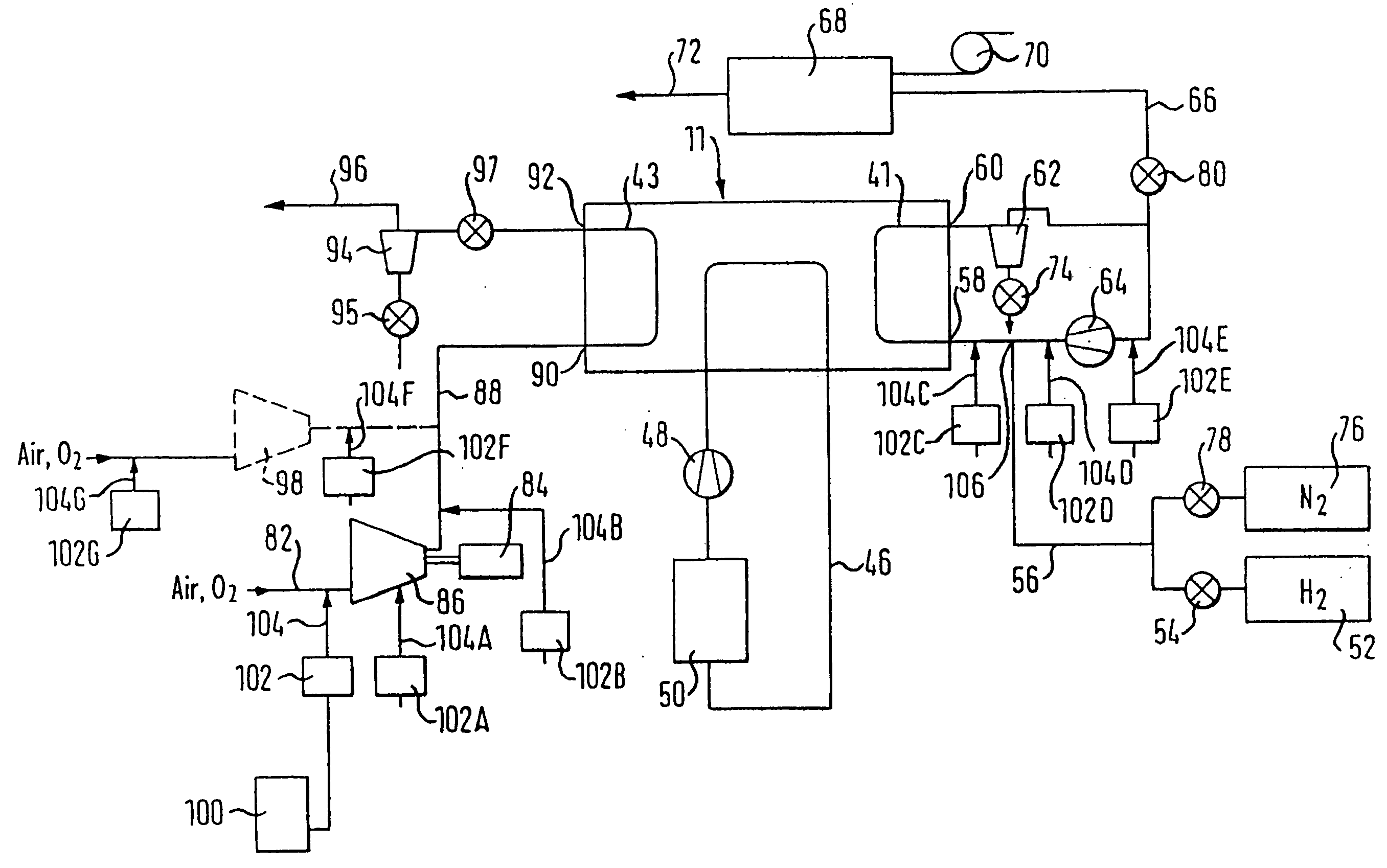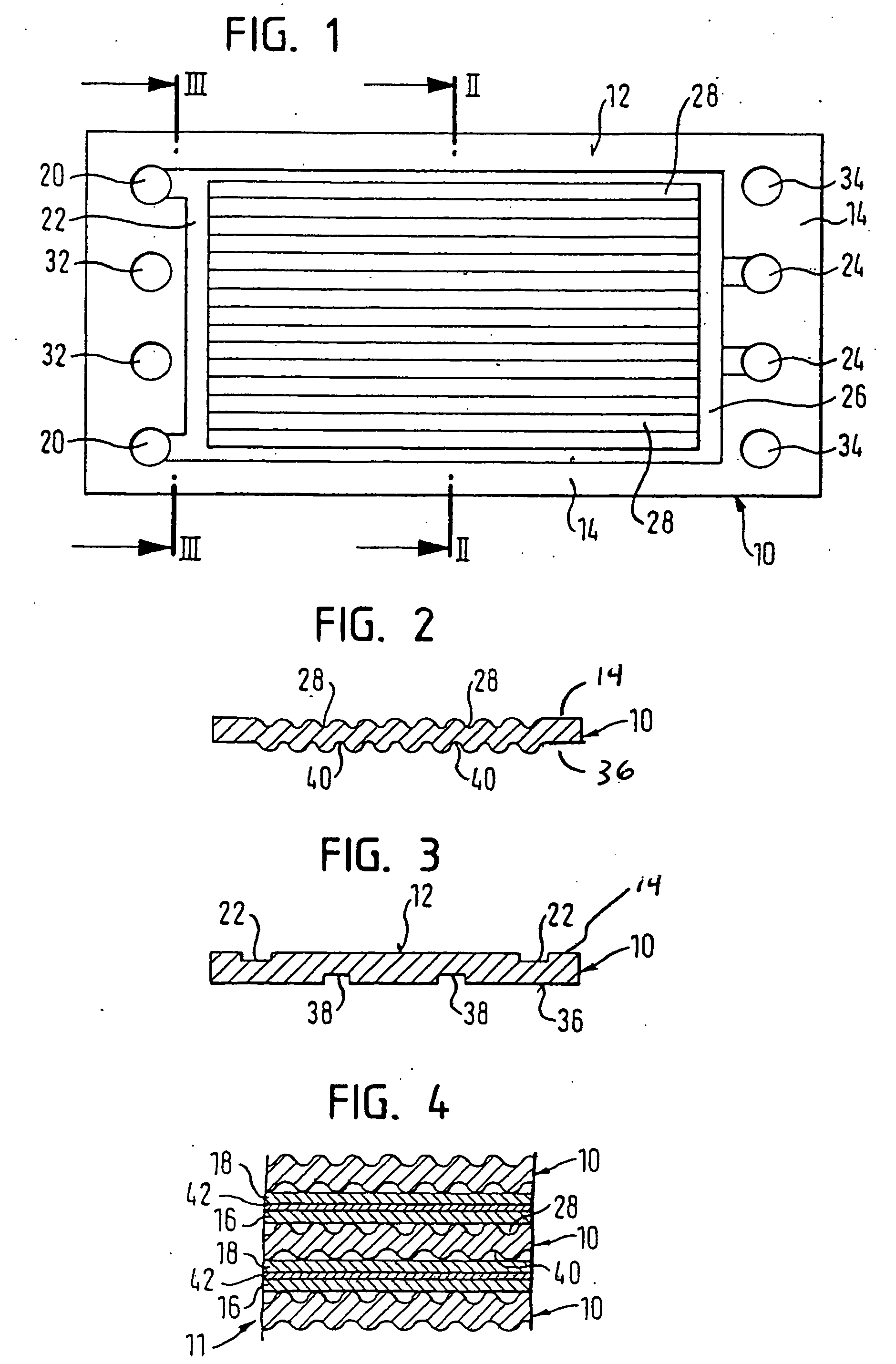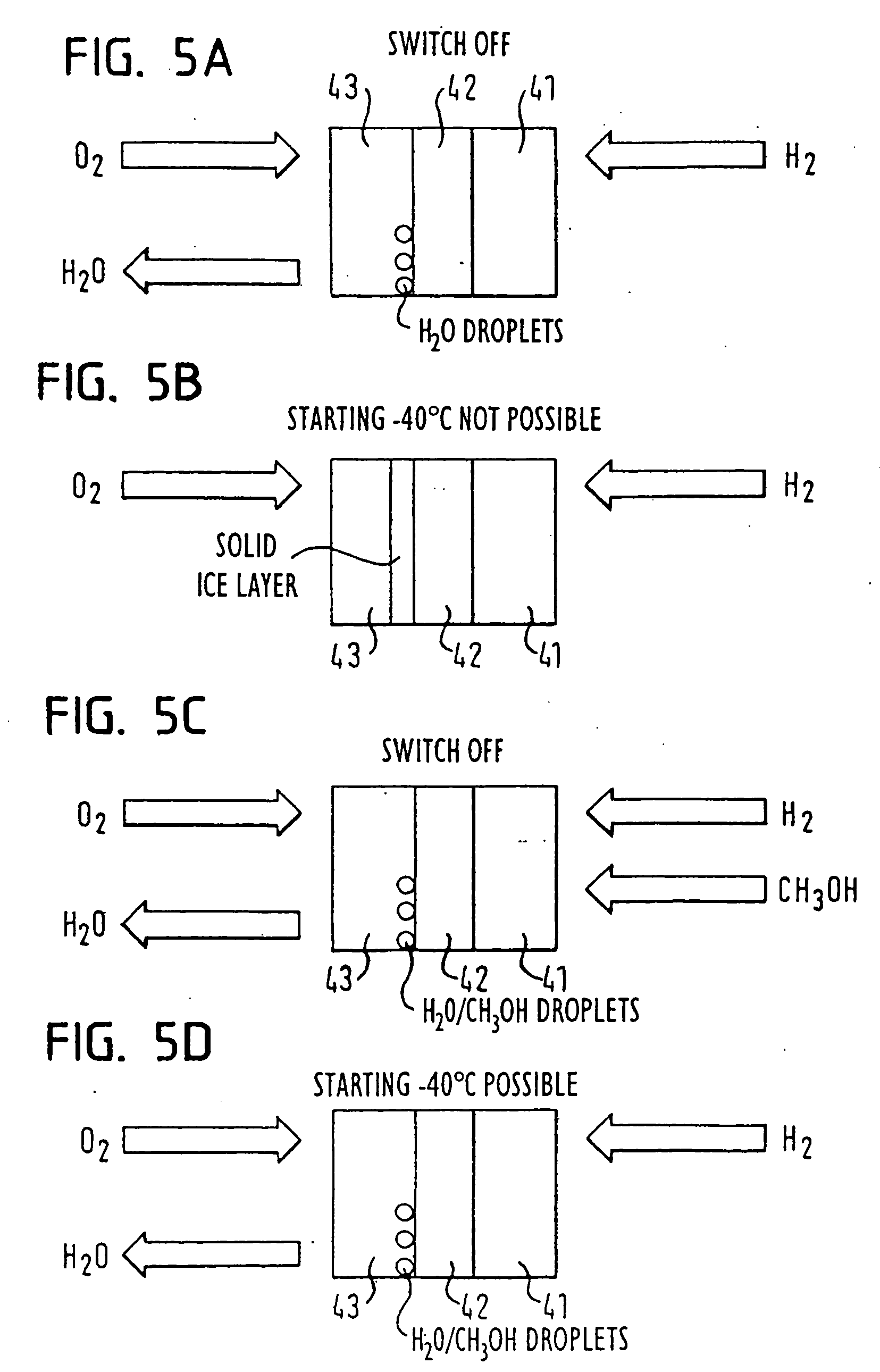Method of operating a fuel cell system
a fuel cell and fuel cell technology, applied in the field of apparatus and method of operating a fuel cell system, to achieve the effect of avoiding complications such as cooling systems with porous walls, lowering the freezing temperature of reaction products, and being less susceptible to freezing
- Summary
- Abstract
- Description
- Claims
- Application Information
AI Technical Summary
Benefits of technology
Problems solved by technology
Method used
Image
Examples
Embodiment Construction
[0027] Referring first to FIGS. 1 and 3, features of a fuel cell are shown. Referring with particularity to FIG. 1, a bipolar plate 10 which is suitable for use in a fuel cell arrangement is shown. An upper surface 12 of the bipolar plate 10 is provided with a generally planar peripherally extending margin 14. Supply openings 20 for incoming oxygen (typically in the form of atmospheric air) are provided on one end of the bipolar plate 10 and are fluidly connected to a recessed channel 22 in the plate upper surface 12. Likewise, discharge openings 24 on the other end of the bipolar plate 10 are fluidly connected to a recessed channel 26. The shaping of the recessed channels 22, 26 in the bipolar plate 10 can be produced by conventional methods, such as through an etching process. The recessed channels 22, 26 are fluidly coupled to one another such that air introduced in supply openings 20 flows through recess channels 22, 26 to discharge openings 24 prior to being removed from the fu...
PUM
| Property | Measurement | Unit |
|---|---|---|
| boiling point | aaaaa | aaaaa |
| boiling point | aaaaa | aaaaa |
| freezing temperature | aaaaa | aaaaa |
Abstract
Description
Claims
Application Information
 Login to View More
Login to View More - R&D
- Intellectual Property
- Life Sciences
- Materials
- Tech Scout
- Unparalleled Data Quality
- Higher Quality Content
- 60% Fewer Hallucinations
Browse by: Latest US Patents, China's latest patents, Technical Efficacy Thesaurus, Application Domain, Technology Topic, Popular Technical Reports.
© 2025 PatSnap. All rights reserved.Legal|Privacy policy|Modern Slavery Act Transparency Statement|Sitemap|About US| Contact US: help@patsnap.com



